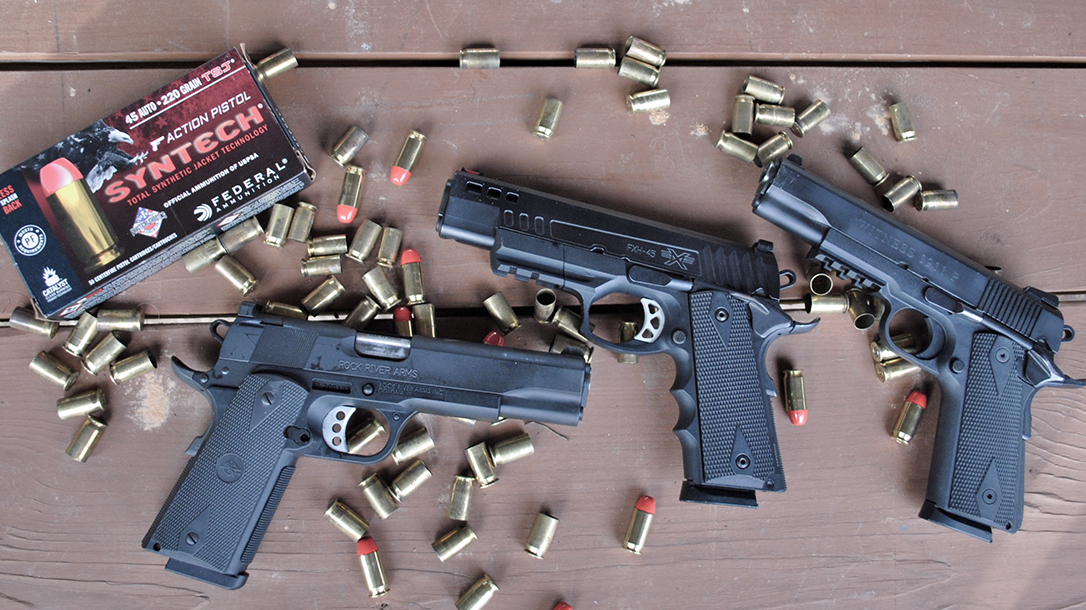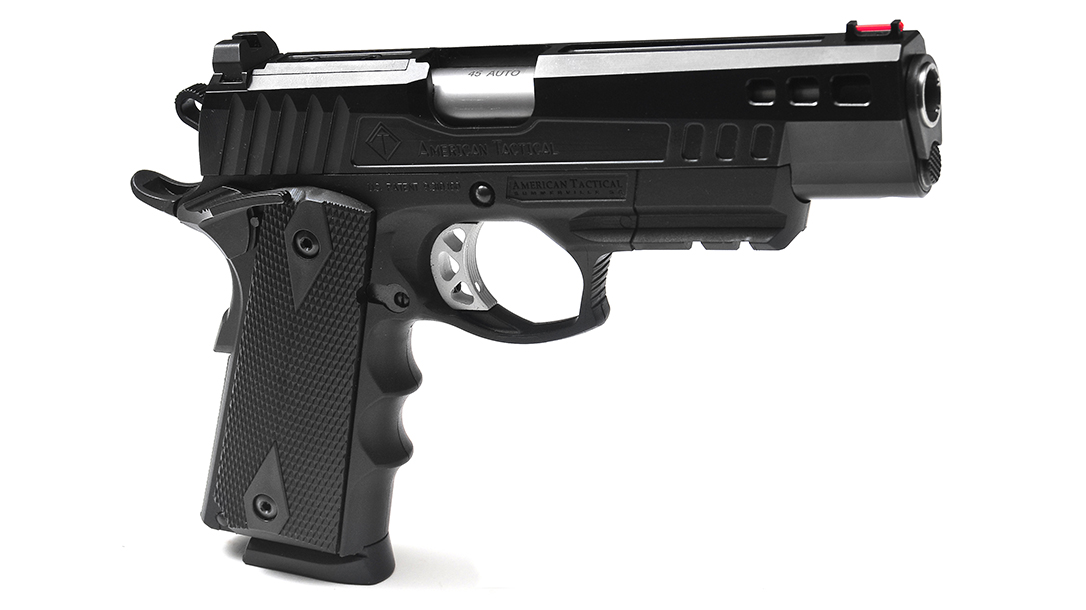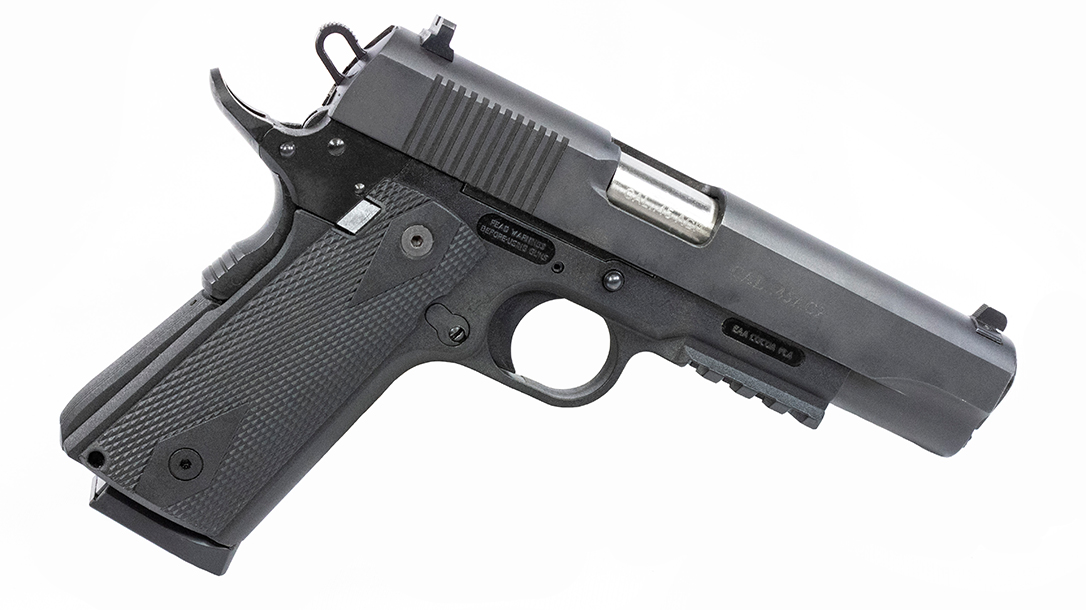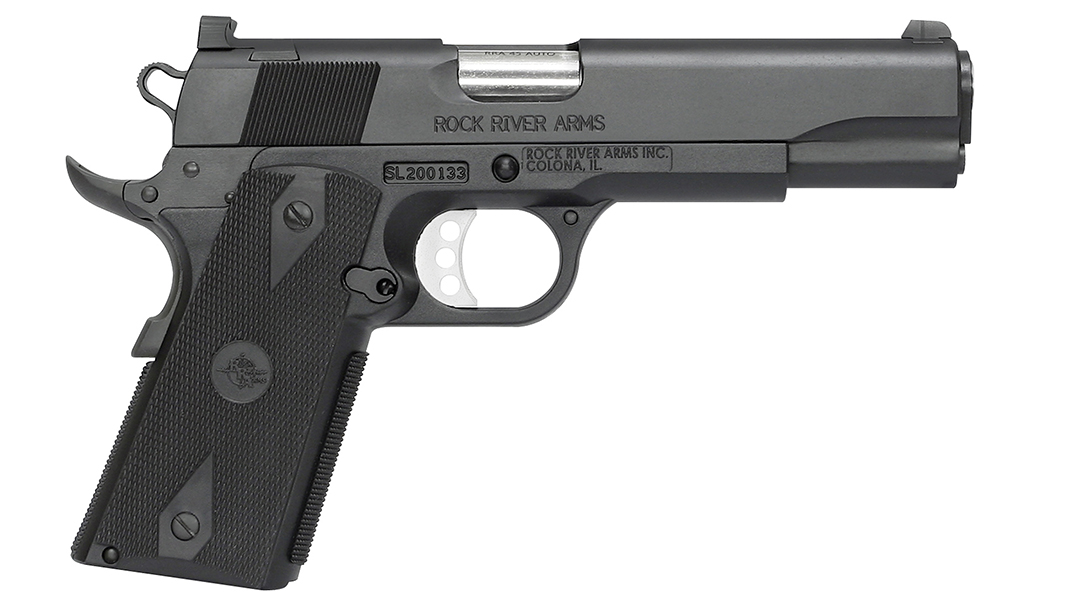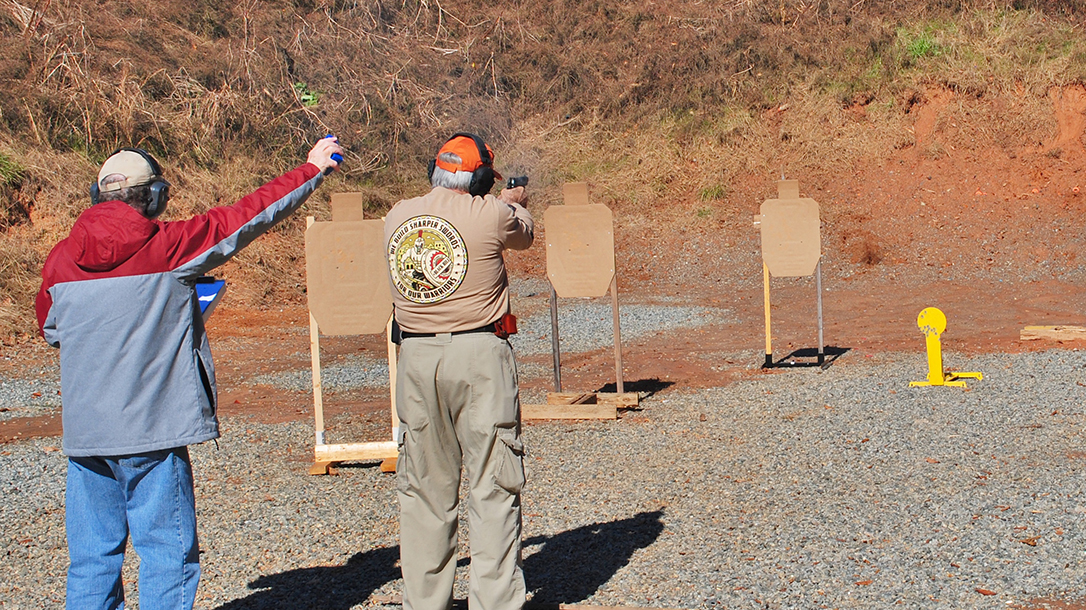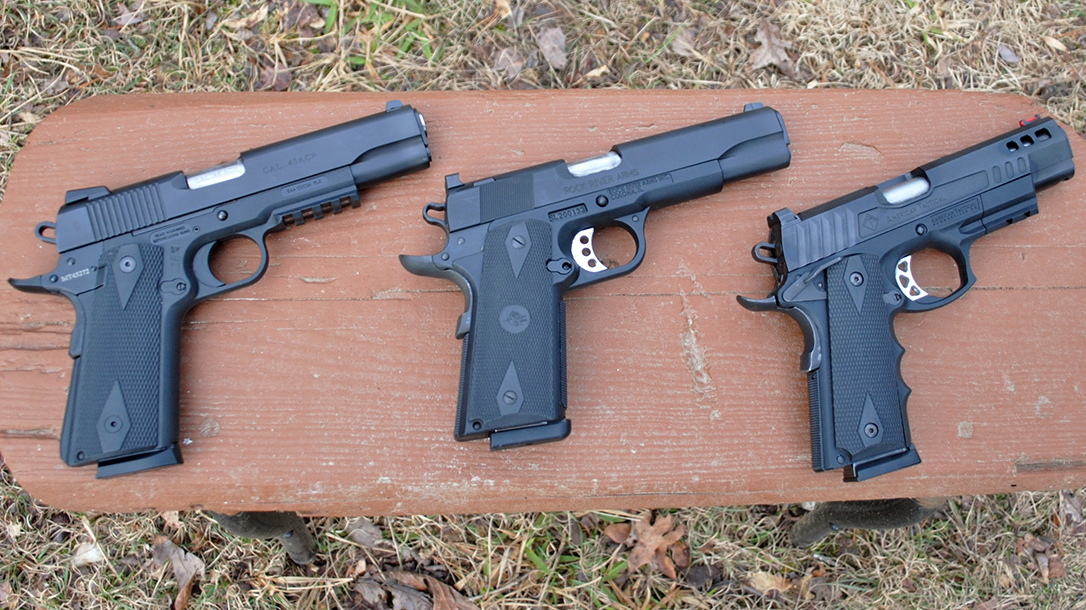In the 1980s, an Austrian company popularized a semi-automatic pistol that utilized a frame and internal components made from polymer. Such a radical concept shook many handgun traditionalists to their very cores, and they were quick to voice their disdain for these so-called “Tupperware pistols.”
The traditionalists scoffed at the idea that a “plastic” pistol could stand up to extensive use and reiterated their belief that handguns should be made from real steel, or at least aluminum alloy. To my experience, the most vocal of these naysayers were 1911 fans, many of whom believed that no improvements in handguns had been made since 1911.
Advertisement — Continue Reading Below
Well, it wasn’t the first time they were wrong, and it probably won’t be the last! The advantages provided by polymer technology are numerous, but the most prominent regard production costs, weight and durability. Polymer frames are produced through an injection molding process that is faster and cheaper than machining metal. Thus, pistols so equipped weigh less, even when loaded, than metal- framed 1911s of the same size and class, making them much more practical for all-day carry. Lastly, despite dire predictions to the contrary, polymer-framed pistols have proven that they can stand up to extensive use as well as, if not better than, metal-framed pistols.
As these things tend to happen, once the advantages of polymers became apparent, a few companies began offering 1911s with polymer frames. So, for this “Battle Royale,” I obtained the American Tactical FXH-45, EAA Witness Elite 1911 Polymer and Rock River Arms (RRA) 1911 Poly.
Polymer 1911 Contenders
All three of these pistols have similar characteristics. They are all single-stack 1911s chambered for the .45 ACP; their controls are all located in the “proper” positions; and they all have skeletonized hammers and beavertail grip safeties. The American Tactical FXH-45 has an extended, ambidextrous thumb safety while the EAA and RRA have standard, single-sided safeties. As for sights, the EAA and RRA have black dovetailed sights while the FXH-45 has a fiber-optic front sight and a black, notch-style rear.
Advertisement — Continue Reading Below
As far as their construction, all three utilize steel or stainless steel slides, but only the FXH-45 has front cocking serrations as well as lightening cuts near the muzzle. Their polymer fames contain separate steel or hardened alloy inserts with rails that the slides reciprocate on while providing strength and rigidity to the frame. The FXH-45’s frame has finger grooves on the frontstrap, while the RRA’s is checkered, and both feature checkered mainspring housings. The EAA has a smooth frontstrap and a serrated mainspring housing.
Both the EAA and FXH-45 have rails on their dust covers for mounting lights or other tactical accessories. And unlike most polymer-framed pistols, they all have separate grip panels that can be replaced with any grips designed for the 1911 platform.
Range Rules
As is our SOP, my wife, Becky, and I test-fired each pistol from an MTM K-Zone rest at 15 yards. All three 1911s shot to the point of aim and produced groups ranging in size from 1.6 to 2.3 inches, which is on par for most of 1911s I’ve shot over the years right out of the box.
Advertisement — Continue Reading Below
Afterwards, I disassembled, cleaned and oiled each pistol—the only maintenance they received. If one malfunctioned, we would attempt to correct the problem at the range. If we were unable to do so, the offending pistol would be scored up to that point and then put aside while we finished testing the remaining guns.
I then proceeded to round up the “usual suspects” to help me run these .45s through their paces. As a confirmed “1911-aholic,” my friend Richard Cole could not wait to get his hands on the test guns, and while my friend Dick Jones displayed his usual nonchalance about the whole affair, he admitted he was really looking forward to hitting the range. We discussed which types of drills would be the best way to test the pistols and settled on the following.
Steel Plate Drill
| Dick | Paul | Richard | |
| American Tactical | 8.2 | 11.8 | 9.4 |
| EAA | 10 | 6.0 | 7.2 |
| Rock River Arms | 5.7 | 6.1 | 5.8 |
From 10 yards, the shooter engages a rack of six 8-inch steel plates. The score consists of the total time for four runs plus a five-second penalty for any plate left standing.
Advertisement — Continue Reading Below
“V” Paper/Popper Drill
| Dick | Paul | Richard | |
| American Tactical | 19.3 | 16.3 | 20 |
| EAA | 20 | 16.2 | 16.8 |
| Rock River Arms | 13.7 | 13.4 | 14.5 |
This drill involves two rows of three IPSC targets angling away in a “V” shape at 5, 10 and 12 yards with a Birchwood-Casey popper placed in the middle at 8 yards. The shooter lifts his pistol and double-taps the left-hand targets before shooting the popper down. He then performs a combat reload and reengages the right-hand targets in the same manner. The drill is repeated twice more with the score being the total time for the three runs plus a five-second penalty for any misses.
Sgt. York Drill
| Dick | Paul | Richard | |
| American Tactical | 23.3 | 19.5 | 24.1 |
| EAA | 19.2 | 17 | 18.5 |
| Rock River Arms | 15 | 16.5 | 19.4 |
This drill attempted to simulate the famous feat where Sgt. Alvin York took out seven charging German soldiers with a 1911 pistol. The shooter lifts the pistol and engage seven steel targets at distances ranging from 8 to 20 yards. He then performs a combat reload and engages them a second time. The drill is then repeated with a one-handed grip. The score consists of the total time for both runs plus a five-second penalty for any misses.
In the end, each shooter had to fire a minimum of 94 rounds through each pistol with a total of 292 rounds from all three. Our test ammo consisted of Federal 220-grain Syntech TSJ rounds as well as Black Hills 230-grain FMJs. The Target Barn provided ISPC cardboard targets and Competition Electronics gave us a Pocket Pro shot timer. Finally, as in previous “Battle Royales,” each pistol was graded on a 1 (worse) to 5 (best) scale in seven categories: reliability, ergonomics, trigger control, recoil control, sights, off-hand accuracy and reloading ease. These were then added together to give each pistol a final score in each category,
with 15 being a perfect score.
Advertisement — Continue Reading Below
In-Depth Results
Reliability
The RRA pistol ran flawlessly the entire time, but we had one failure to return to battery with the EAA. We experienced a number of failures to chamber and two failures to eject with the American Tactical FXH-45. Applying some oil remedied the situation.
Ergonomics
All of us disliked the finger grooves on the FXH-45’s frontstrap, and its radically undercut triggerguard tended to pinch our middle fingers. The EAA’s smooth frontstrap came in for criticism, as did its safety, which required an inordinate amount of effort to use. Thanks to its thicker over-molded grips and checkered frontstrap, the RRA pistol won here.
Trigger Control
Advertisement — Continue Reading Below
Since we’re all used to shooting tuned 1911s, none of the triggers on the test pistols lived up to our expectations. That being said, the FXH-45’s was quite gritty and heavy, which caused us to throw shots high and right on the plates and farther targets.
Recoil Control
Our feelings in this category essentially duplicated those in the ergonomics category.
Sights
Since we’re all in our 60s, the FXH-45’s fiber-optic front sight was greatly appreciated. Why the EAA had white dots on its rear sight but none on the front sight escaped us. But to rectify this, we used a marker pen to black out the offending dots. The RRA’s generously sized ledge-style rear sight and sharply serrated blade front sight provided a sharp sight picture for fast targeting.
Advertisement — Continue Reading Below
Off-Hand Accuracy
While all three proved suitably accurate, having to use “Kentucky” windage and elevation with the FXH-45 led to its lower score.
Reloading Ease
Magazines routinely failed to fall free with the EAA and FXH-45, forcing the shooter to pull them out, a situation that was worse with the blued magazines. We rarely encountered this problem with the RRA pistol, and its beveled magazine well made for fast, smooth reloads.
| American Tactical | EAA | Rock River Arms | |
|---|---|---|---|
| Reliability | 8 | 14 | 15 |
| Ergonomics | 8 | 11 | 15 |
| Trigger Control | 8 | 13 | 13 |
| Recoil Control | 10 | 11 | 14 |
| Sights | 14 | 11 | 13 |
| Off-Hand Accuracy | 8 | 13 | 14 |
| Reloading Ease | 10 | 10 | 14 |
| TOTAL | 66 | 83 | 98 |
Note: 15 is a perfect score for each category while 105 is a perfect total score.
Advertisement — Continue Reading Below
While all three pistols displayed traditional 1911 features, both good and bad, when I asked Dick and Richard which was their favorite, they chose the RRA. Dick said, “It had wonderful sights, a damn good trigger and was easy to reload. Just a fun pistol to shoot.” Richard said it was the “best of the bunch. It feels solid, and I really liked how the thicker grips improved handling and recoil control.”
I also chose the RRA pistol. Despite its lack of a fiber-optic front sight, the sights were good. I also loved the checkered frontstrap and the fact that it was the only pistol with a beveled magazine well.
We came away from this “Battle Royale” with a good opinion of polymer 1911 pistols. While I’m sure this concept still makes traditionalists out there cringe, you can expect more and more “plastic” 1911s to hit the market in years to come. It’s just inevitable!
American Tactical FXH-45
- Caliber: .45 ACP
- Barrel: 5 inches
- Overall Length: 8.7 inches
- Weight: 27.5 ounces (empty)
- Grips: Polymer
- Sights: Fiber-optic front, black rear
- Action: SA
- Finish: Matte black
- Capacity: 8+1
- MSRP: $600
For more information, visit americantactical.us.
EAA Witness Elite 1911 Polymer
- Caliber: .45 ACP
- Barrel: 5 inches
- Overall Length: 8.58 inches
- Weight: 32 ounces (empty)
- Grips: Polymer
- Sights: Dovetailed
- Action: SV
- Finish: Matte black
- Capacity: 8+1
- MSRP: $598
For more information, visit eaacorp.com.
Rock River Arms 1911 Poly
- Caliber: .45 ACP
- Barrel: 5 inches
- Overall Length: 8.7 inches
- Weight: 32.64 ounces (empty)
- Grips: Polymer
- Sights: Front post, ledge rear
- Action: SA
- Finish: Parkerized
- Capacity: 7+1
- MSRP: $1,025
